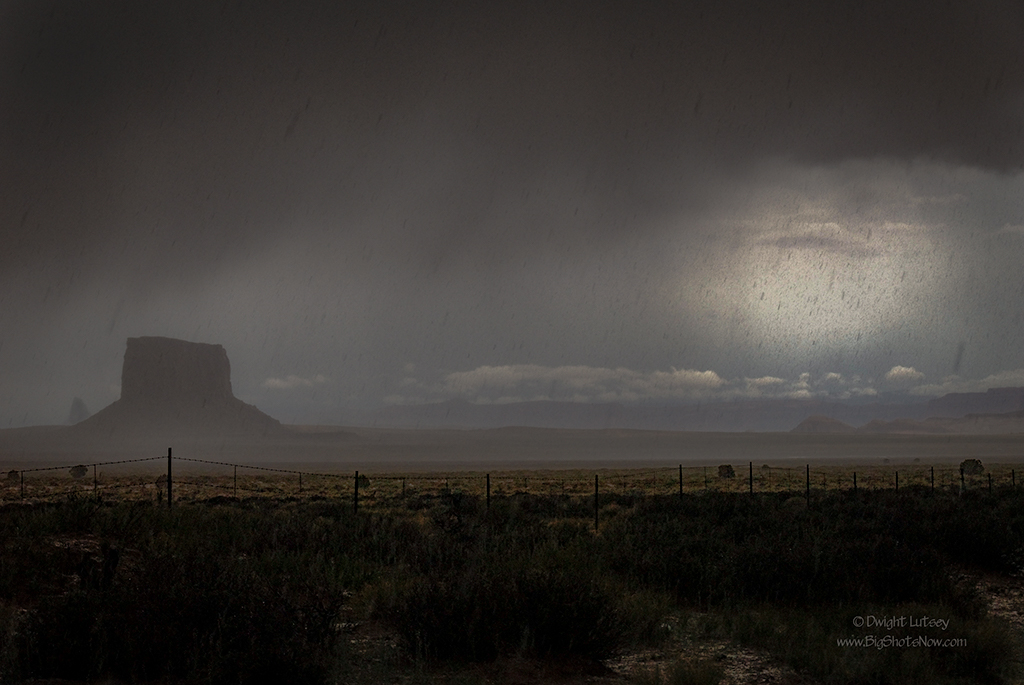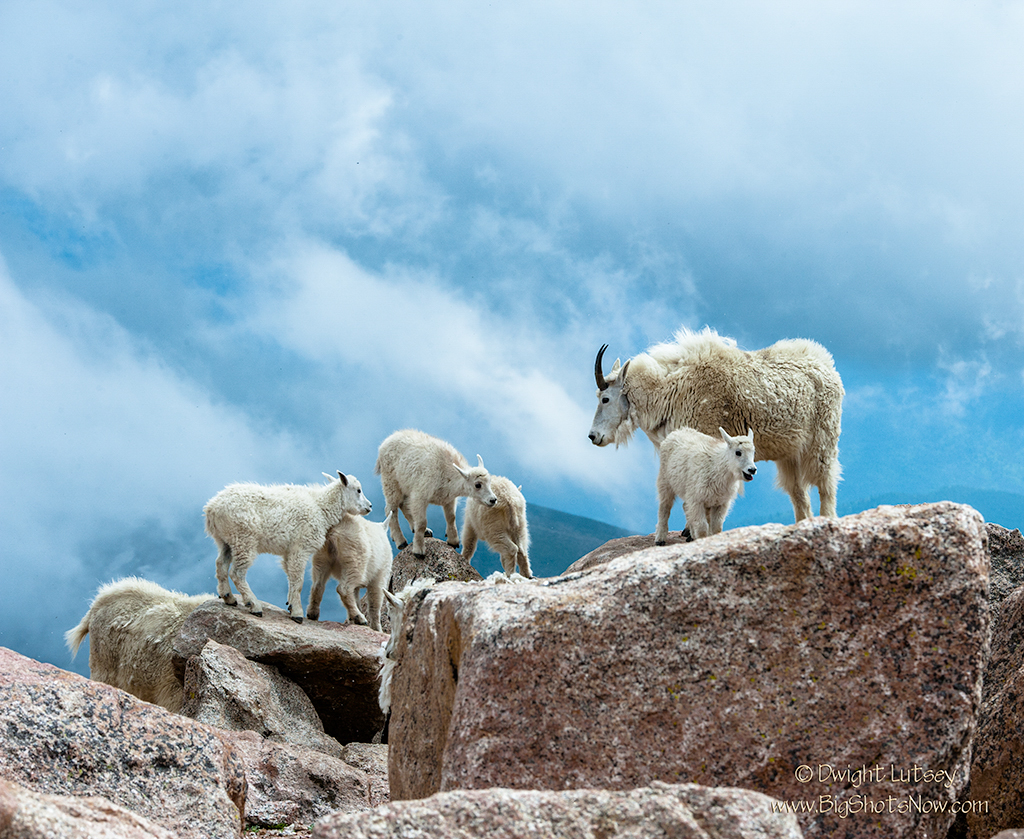This is Monument valley. The same Monument valley John Wayne road thru in Stagecoach and many other films. Usually when you see pictures of the valley it’s under bright sun and clear skies, with the buttes in stark relief against the sky, hardly a cloud to be seen, the timeless desert shot from countless calendars. But that’s not always the case as can be seen in the image above.
Monument valley averages around 7″ of rain a year and as we drove towards the entrance in this storm it looked like it was getting all 7″ at once. If you ‘re from the Midwest or the northern tier of the our country you are used to seeing rain storms that last all day or longer sometimes. That’s usually not how our western storms go. With few exceptions our storms race in with an unconstrained fury and drop all of its moisture in a hurry. Our storms don’t fool around. The energy builds up over the mountains, the clouds grow into the very upper reaches of the sky then all hell breaks loose. Rain, hail, sometimes even snow if you’re real lucky, and wind to blow your lawn chairs into New Mexico.
This storm has just about completed its job as you can see by the sun trying to break through the clouds, yet it is still raining hard enough on the highway that the windshield wipers are having trouble handling it. When a storm like this happens you just wait it out. The ground is going to be saturated and you want to stay way clear of any arroyos or small ditches, even low depressions in the highway as all that water has to go somewhere and it all doesn’t soak into the ground. It moves through the area with enough force to wash away cars and trucks as it they were rubber ducks and it happens real fast.
The roads in the valley are unpaved and made up of a combination of clay, decomposed sandstone, some gravel and that combination, when water is added to it, turns into an adhesive mixture that will coat your tires and fill up your wheel wells until you cannot turn your steering wheel. Besides having the adhesive strength of gorilla glue it turns into a cement-like substance that nearly has to be jack hammered out when it sets up. The general rule of thumb is, don’t drive on those roads until they’ve had a chance to dry out some.
This shot was taken during April in the mid-afternoon and the next morning you could drive the roads with no problems, in fact in some areas you could raise dust as you drove. That is if you didn’t make the mistake of parking in some low area where water runs through. If you did you’re probably in Lake Powell right now. Things happen quickly out here and you need to pay strict attention to your surroundings, but that’s just part of the drama of the West. Some folks thrive on it.



You must be logged in to post a comment.